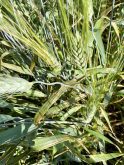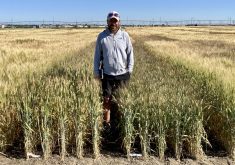“Challenging growing conditions” on the Prairies in 2023 somehow produced a Canadian wheat crop within the five-year average for tonnage, average to above-average protein content and “excellent” quality.
That about sums up the New Wheat Crop Report from Cereals Canada, released Nov. 21, describing what growers already knew: how below-average temperatures initially delayed seeding in the West, followed by a summer of above-average temperatures and below-average rainfall on the southwestern Prairies and an early harvest resulting in “highly variable” yields.
Once the crop was in the bin, however, the data showed:
Read Also

Conagra considers selling its share in Ardent Mills
Conagra is open to selling its 44 per cent share in Ardent Mills, North America’s largest milling company.
- over 95 per cent of the CWRS (Canada Western Red Spring) crop grading No. 1 and No. 2, with average protein content;
- over 80 per cent of CWAD (Canada Western Amber Durum) grading No. 1 and No. 2, with protein content higher than average; and
- over 90 per cent of CPSR (Canada Prairie Spring Red) at No. 1 and No. 2, with average protein content.
Wheat ash content was found to be lower in 2023 in all classes, compared to 2022. “This translates to lower flour and semolina ash contents, allowing millers to optimize extraction when they mill Canadian wheat,” Cereals Canada said in its report.
In all, Canada produced 27.909 million tonnes of wheat plus 4.045 million tonnes of durum, for 31.954 million tonnes in total, down seven per cent from 2022 but “consistent with the five-year average.”
In Alberta, hard red spring wheat was estimated at 65.9 per cent grade No. 1 C.W. (Canada Western), while in Saskatchewan, 94 per cent of spring wheat and 82 per cent of durum wheat were estimated to be rated No. 1 and 2 C.W.
In Manitoba, spring wheat quality was rated 40 per cent “good” and 50 per cent “fair” in the province’s southwest and central regions; 60 per cent “good” and 30 per cent “fair” in the northwest; and 90 per cent “good” in the eastern and Interlake regions.
Winter wheat crops in Eastern Canada, meanwhile, generally went in under dry seeding conditions and a mild winter. “Despite early-season quality concerns and a delayed harvest in some areas due to persistent rain, the yields and quality of the Eastern Canadian crop exceeded expectations,” Cereals Canada said.
Overall, the region’s winter wheat-growing areas saw “strong yields and production paired with good quality ratings.”















